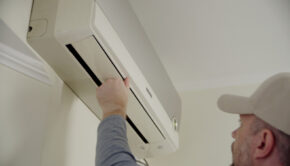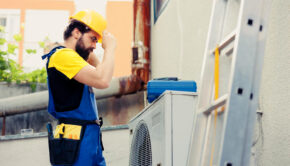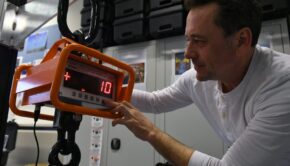Should You Upgrade, Or Maintain Existing HVAC Systems?
Best Practices Vary From Case To Case
The Internet of Things (IoT) uses WiFi technology to make it so even uncommon devices are able to use web integration for a variety of purposes. From data collection to remote utility, you’re able to maximize a device’s usefulness in a way which can ultimately end up being cost-effective.
Still, whether or not you make a tech upgrade is largely determined by what kind of existing systems you already have in place. For example, if you’ve got older AC units, whether they would benefit more from replacement or repair can be iffy. You’ll want the advice of professionals to make the wisest choice.
For example, you need not upgrade to an entirely new system for IoT functionality. You can install a switch accessible from the internet which simply surrogates previously physical manipulation. But sometimes it’s not an issue of whether you can optimize, it’s an issue of whether you should.
Straightforward Professionalism
Boerne air conditioning experts can help determine whether AC systems are repairable; according to BoerneAirConditioningExperts.com, “While some AC breakdowns can indeed be very costly—up to a point where buying a new one might seem like a better idea—many of them are perfectly manageable with the right professionals on the job.”
You want this kind of straightforward appraisal when you’re dealing with systems that require repair. Certain companies make their prerogative about selling clients on the newest systems available regardless of the actual issue. But you want honesty in business, and the honest HVAC people will help you hang on to an old system.
Such HVAC solutions providers have worked professionally with many diverse clients, and can give you a cost breakdown that will help you make your decision. For example, in the previously mentioned IoT scenario, installing a WiFi enabled control apparatus after the system has been repaired could be recommendable to complete overhaul.
This allows you to not only control the atmosphere of your business, but monitor it remotely. There may be times throughout the year where a given facility has no one in it. What’s the point of leaving the HVAC on? Well, you want the area to be something people can withstand when they return. You might set a timer that notifies you when a certain temperature has been attained.
The Right Solution For The Right Situation
Direct control of infrastructural systems can usually help cut unnecessary energy costs. Where before, you’d either have to estimate how long the system would need to be on before a reasonable temperature were reached in the Texas sun, now you just check your phone.
There’s no need to send someone ahead and pay them for the time. You don’t have to have an individual get a set of keys for access to the facility. There aren’t any travel expenses which your organization will be responsible for. Plus, as you collect accurate data, you can minimize energy expenditure through precision.
When you know exactly how long it takes to warm up or cool down a building, again, there’s no more guessing, meaning you can shave statistically predictable costs from your utility budget on a yearly basis. The key is to work smarter, not harder; and that means taking things on a case by case basis. One buildings climate needs may differ from another’s.
That said when it comes to HVAC professionals, you want to find those who understand old and new climate control technology. To that end, it might be prudent to find a group who proactively states their willingness to upgrade systems or maintain them, whatever the client may require.
















